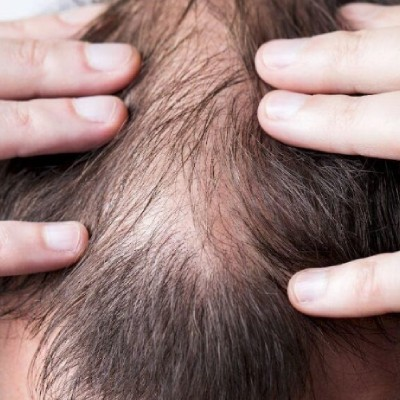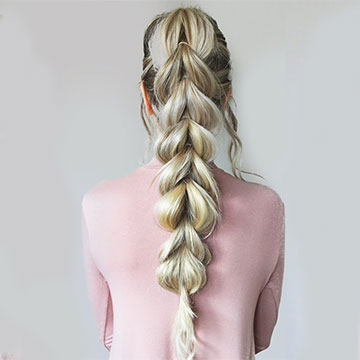Is Testosterone the Cause of Your Hair Loss?

16 February 2024

moneshairexperts

Everyone is susceptible to issues with hair loss. Both men and women will eventually have issues with hair shedding, receding hairlines, and thinning hair. It usually stems from advancing age, and it won't be long before they see hair starting to fall out. However, it's also likely that alterations in hormones, notably the level of testosterone, might cause both male and female pattern hair loss. The main androgen, or male hormone, in humans is testosterone, which is present in both men and women. It comes in various types, and the hormone dihydrotestosterone (DHT) is one of its metabolites. Consequently, why does testosterone lead to hair loss? DHT hair loss is very real, as levels that are too high can make hair follicles smaller, which inhibits hair development and eventually results in hair loss.
Everyone is susceptible to issues with hair loss. Both men and women will eventually have issues with hair shedding, receding hairlines, and thinning hair. It usually stems from advancing age, and it won't be long before they see hair starting to fall out. However, it's also likely that alterations in hormones, notably the level of testosterone, might cause both male and female pattern hair loss.
The main androgen, or male hormone, in humans is testosterone, which is present in both men and women. It comes in various types, and the hormone dihydrotestosterone (DHT) is one of its metabolites. Consequently, why does testosterone lead to hair loss?
DHT hair loss is very real, as levels that are too high can make hair follicles smaller, which inhibits hair development and eventually results in hair loss.
What is Testosterone?
Although testosterone is a hormone associated with the male sex, it is also present in females. When they reach puberty, men begin to produce the hormone since it is linked to various masculine traits. Additionally, testosterone and other androgens are produced by women. This hormone must therefore be present in our bodies in the proper quantity. Our bodies' testosterone levels impact various things, including mood, puberty, sexual function, etc. Lack of strength, sleep problems, and low testosterone levels can bring on even depression. Hair loss is a side effect of both low and high testosterone levels.
Four different forms of injectable testosterone are available and are given for hormone therapy.- Cypionate It is long-acting testosterone that takes around eight days to break down.
- Enanthate It is a testosterone ester that is metabolized in 5 days or less.
- Propionate A quick-acting ester peaks in the blood within hours of administration.
- Testosterone Aqueous Suspension It has no ester and only stays in the body for a short time.
How Does Testosterone Affect Hair?
The overuse of this active ingredient is the main cause of testosterone and hair loss. DHT blocks the movement of vital proteins and nutrients when it builds up on the hair follicles. The follicles' inability to receive nutrients causes testosterone-induced hair thinning. The new hair strands get thinner, and the resting phase of the cycle gets longer.
DHT can also result in a peculiar feminine baldness pattern because it is also present in females. In the end, it results in permanent hair loss and bald patches. The term "DHT testosterone hair loss" also applies to this occurrence.
Does High and Low Testosterone Cause Hair Loss?

Your body's hair grows from follicles. A hair strand is contained in a follicle, a small pore beneath your skin. Your hair grows for two to five years, entering a resting phase and falling out.
Dihydrotestosterone is a hormone produced by the body when levels of androgens are high (DHT). DHT lowers the size of your hair follicles by binding to specific proteins in your body. It could cause hair thinning and possibly shrink the growth of brand-new hair strands.
Both low and high testosterone levels can bring on hair loss. It's important to realize that people with low testosterone levels may also have high amounts of DHT, which is a factor in hair loss. Men with male pattern baldness have been found to have low testosterone levels and average DHT levels in their bodies. While some people have the same amount of DHT as others, their genetic makeup makes their hair follicles more susceptible to DHT. It makes their follicles more prone to shrinking in size.
Genetics and changing testosterone levels are associated with androgenetic alopecia in men and women. It happens in a precise manner that could eventually lead to total baldness.
- Male Pattern Baldness The most typical form of male pattern baldness is hair loss. It typically progresses in a pattern of thinning hair on the crown and a receding hairline. Your genes and male sex hormones have a role in male pattern baldness. The onset of androgenetic alopecia in men is frontal baldness. Each hair strand rests in a follicle, a small pocket in the skin. Usually, hair follicle shrinkage over time that results in shorter, finer hair causes baldness. The follicle eventually stops producing new hair. The fact that the follicles are still alive means fresh hair can still grow. It begins at the temples and progresses to total baldness.
- Female Pattern Baldness The most typical hair loss issue among women is female pattern baldness. A pattern of hair loss (alopecia) brought on by hormones, ageing, and heredity is known as female-pattern baldness. The part-line is frequently where hair thinning starts. It might or might not cause total baldness. Women with PCOS or those over 40–50 years post–menopause are more likely to develop female pattern baldness.
Treatment Options for Hair Growth
It can be challenging to treat testosterone-related hair loss. A therapy for hair regrowth is applied. To receive long-term hair regrowth treatment, one must normalize the body's testosterone level.
- Laser Therapy This medically approved, cutting-edge scalp hair fall treatment from the AHS clinic promotes the growth of hair follicles and is one of the most effective and safest options to slow or completely stop hair loss and promote healthy hair regrowth and new regrowth. Advanced laser therapy is one such cutting-edge method for retaining hair that will aid in avoiding hair loss and encouraging hair regrowth.
- Hair Transplant Hair transplantation may be considered the right treatment for you if you are facing hair loss that can be solved by a testosterone hair loss treatment. If the degree of damage on the scalp is apparent hair transplantation may be the right testosterone hair loss treatment. FUE (Follicular Unit Extraction) and strip harvesting are the two most popular techniques. There is also the option of Strand-by-Strand (The Ultimate) available at Advanced Hair Studio’s.
- Flashpoints The most advanced hair extension techniques in the world are called Flashpoints by the AHS clinic. They can give your lifeless, fine, short, or dull hair a new look in a matter of hours, enabling you to get the look you've always desired. Flashpoints are significantly less harsh on your hair than other extensions available. It is because it employs a clever hair extension technique in which a link of your new Flashpoints is linked to a lock of your hair rather than glue, wax, or weaving. This treatment is majorly opted by ladies and as a lady you can even use them repeatedly. No one can tell the difference between your old hair and your new, thicker, longer hair because it looks so natural.
Conclusion
There is a tonne of additional therapies available for testosterone hair loss. It is better to see a professional first because a hair specialist will check your scalp and medical history for a thorough diagnosis. For an advanced hair check, stop by the nearby AHS clinic or make an appointment beforehand.Stay Updated
Subscribe to our email newsletter for helpful tips and valuable resourses
Be an influencer
Join forces with Advanced Hair Studio! Explore exciting collaboration opportunities tailored for influencers. Let's redefine haircare together.
Connect now












